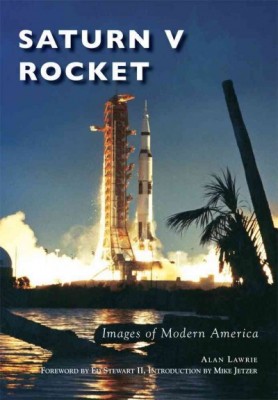| Saturn V Rocket Contributor(s): Lawrie, Alan (Author), Stewart II, Ed (Foreword by), Jetzer, Mike (Introduction by) |
|
 |
ISBN: 1467123870 ISBN-13: 9781467123877 Publisher: Arcadia Publishing (SC) OUR PRICE: $23.74 Product Type: Paperback Published: November 2016 |
| Additional Information |
| BISAC Categories: - Technology & Engineering | History - Technology & Engineering | Aeronautics & Astronautics - History | United States - State & Local - South (al,ar,fl,ga,ky,la,ms,nc,sc,tn,va,wv) |
| Series: Images of Modern America |
| Physical Information: 0.5" H x 6.3" W x 9.2" (0.65 lbs) 96 pages |
| Themes: - Chronological Period - 1960's |
| Descriptions, Reviews, Etc. |
| Publisher Description: In the first comprehensive photographic account of the Saturn V, relive the drama of the Space Race through the production of the rocket that would carry Neil Armstrong and crew to the moon. In 1961, Pres. John F. Kennedy set the challenge of landing a man on the moon by the end of the decade. In order to achieve this, NASA partnered with US industry to build the largest rocket ever produced, the Saturn V. It was designed and tested in record time and made its first flight in 1967. Less than two years later and within the timescales set by the president, the crew of Apollo 11 was launched on a Saturn V and watched live by millions of people on televisions around the world. From this launch, Neil Armstrong made his famous giant leap for mankind, later to be followed by 11 other astronauts who also walked on the moon. |
Contributor Bio(s): Lawrie, Alan: - Alan Lawrie is a satellite propulsion engineer working for Airbus Defence and Space in the United Kingdom. He has 36 years of experience in the space propulsion industry and has published two books on the Saturn rockets as well as Images of Modern America: Sacramento's Moon Rockets. Using unseen photographs from various archives and private collections, this is the first comprehensive photographic account of the Saturn V. |